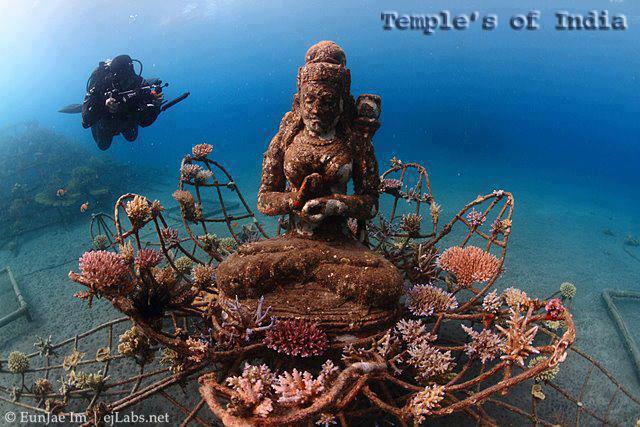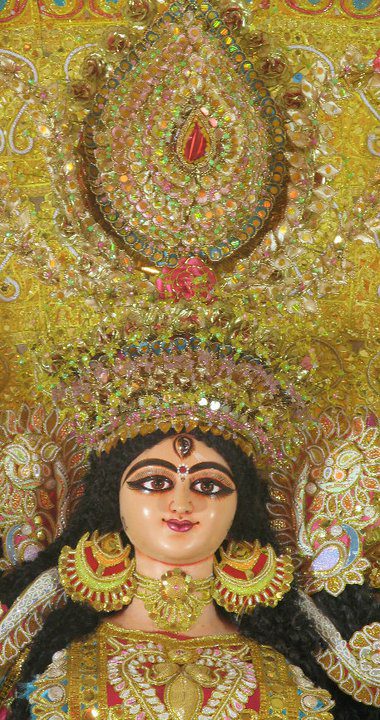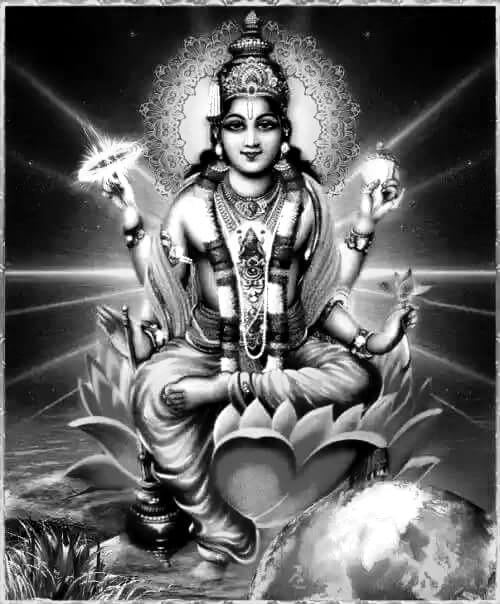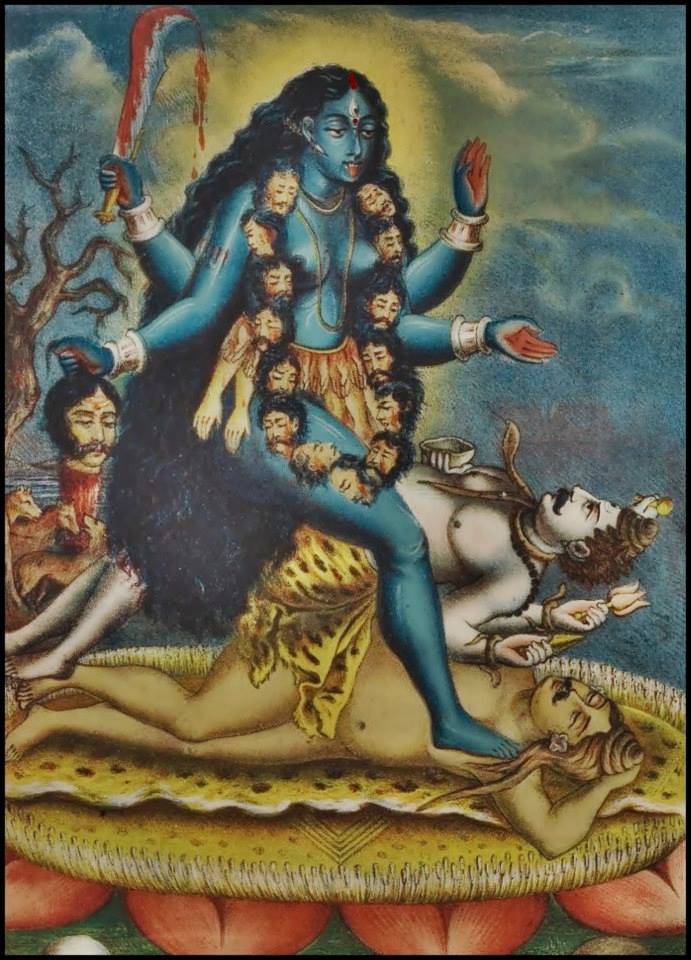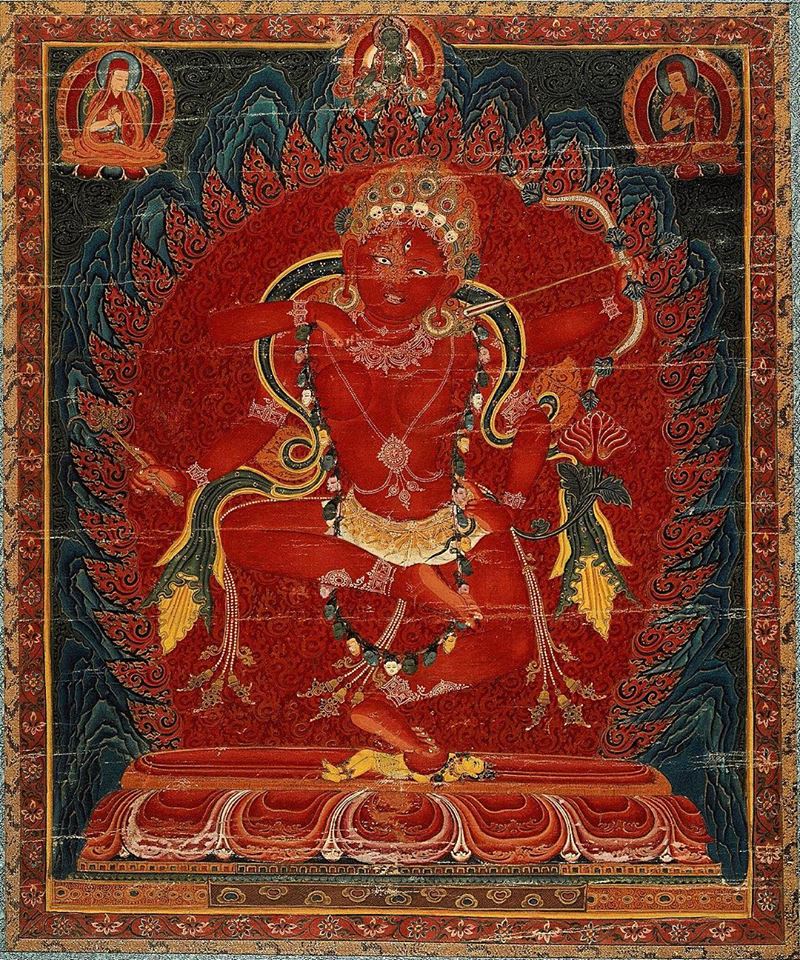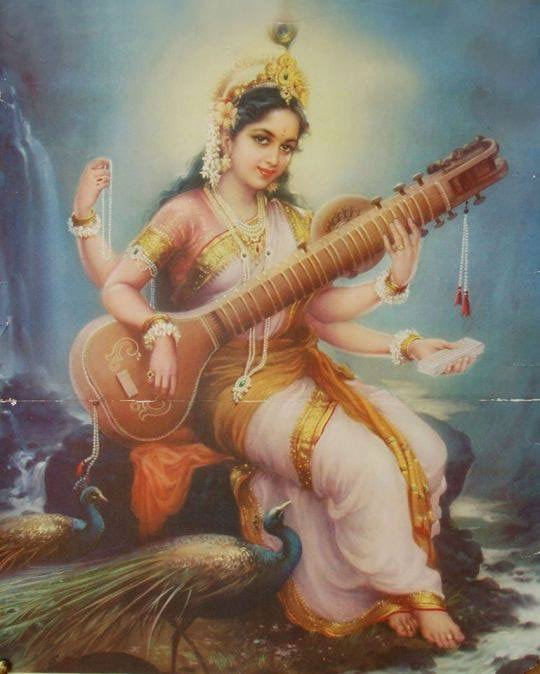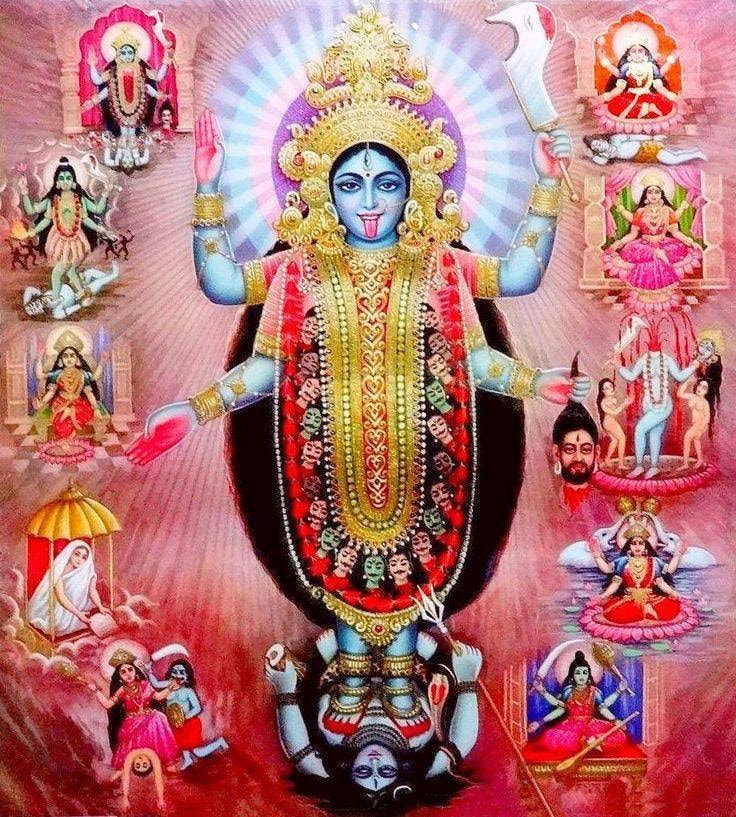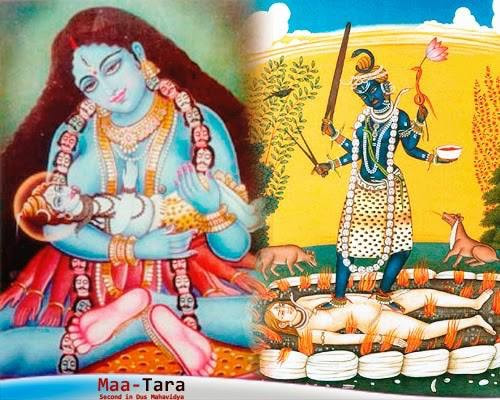
 Maa Avantika, Bhairav Parvat Shakti Peeth – 10th Among 51 Shakti Peethas Bhairav Parvat, Ujjain is the most famous Shakti Peetha where it is said that the “Upper Lip” of Maa Sati fell and the idols are Devi Maa as Avanti and Lord Shiva as Lambkarna Bhairav. It is located near Ujjain in Madhya Pradesh, India. Bhairavparvat, at Bhairav hills on the banks of Shipra river a little distance from Ujjaini town. Ujjain also known as Ujain, Ujjayini, Avanti, Avantikapuri is an ancient city of Malwa region in central India, on the eastern bank of the Shipra or Kshipra River, today part of the state of Madhya Pradesh. It is the administrative centre of Ujjain District and Ujjain Division. In ancient times the city was called Ujjayini. As mentioned in the Mahabharata epic, Ujjayini was the capital of the Avanti Kingdom, and has been the Prime Meridian for Hindu geographers since the 4th century BCE. Ujjain is one of the seven sacred cities “Sapta Puri” of the Hindus, and the Kumbh Mela religious festival is held there every 12 years. It is also home to Mahakaleshwar Jyotirlinga, one of the twelve Jyotirlinga Shrines to the Lord Shiva and is also the place where Lord Krishna got education with Balarama and Sudama from Maharshi Sandipani. Copied from Hinduism forgotten facts on facebook  Shakti Peeth Dhakeswari temple is the oldest Hindu temple in Dhaka and was established in the 11th century The Bhabanipur Shaktipeeth is a place of worship consecrated to the Goddess Maa Bhabani. The Shakti devi here is called Arpana and the Bhairava is Vaman. As to which part of "Sati" Maa Tara's body fell at Bhabanipur, there are various versions. It could be left anklet (ornament), ribs of left chest, right eye, or bedding (according to various sources). According to the Mahabharata, in the Satya Yuga, King Daksha arranged a ritual called Yagna in which her daughter Goddess Sati and Her husband Lord Shiva was not invited. Still Goddess Sati attended the function. Unable to bear the insult towards Her husband Lord Shiva, Goddess Sati protested by sacrificing Herself into the fire of the Yagna. Enraged with grief, Lord Shiva started the dance of destruction across the Universe with the corpse of Goddess Sati on His shoulder. To stop this, Lord Vishnu cut the corpse of Goddess Sati with the Sudharshan Chakra and as a result the various pieces of Goddess Sati's body and Her ornaments fell at various places of the Indian subcontinent. These places are now known as Shakti Peethas Being a Shakti Peeth, Bhabanipur is a historic place of pilgrimage for the followers of Hinduism. There are numerous temples at this Shakti-peeth premises which are visited by pilgrims from all over the country and abroad, irrespective of sectarian differences. There is a legend saying that while once a conch-bangles dealer was passing by the side of a lonely pond in a dense jungle near the then Bhabanipur temple, a little girl with a tip of vermilion on her forehead approached him and told him that she was the daughter of the Natore Rajbari (Palace). She bought a pair of conch-bangles from him and requested him to collect the price of that bangles from the then Maharani Bhabani from a basket kept in the Rajbari at a specified place. Her appearance and polite words overwhelmed the conch-dealer. The Maharani (Queen) rushed to the place/site with her men and the conch-dealer as soon as she heard this from him. On the earnest prayer by the conch-dealer, Ma Bhabani raised from that pond showing her two wrists with the conch-bangles worn. The Maharani and the men present there were surprised, and the divinity of Mother Bhabani spread throughout this subcontinent. This is that sacred "Shakha-Pukur" (conch-bangles pond) where the devotees take their holy bath when they go there. Surrounded by a boundary wall, the Temple comprises about an area of four acres (12 bighas) - Main Temple, Belbaran Tala, 4 Shiva Temples, Patal Bhairava Shiva Temple, Gopal Temple, Bashudev Temple and Nat Mandir. On the north side, there is a Sheba Angan, Holy Shakha-Pukur (conch-bangles pond), 2 bathing ghats, 4 Shiva Temples outside the boundary wall and a Panchamunda Asana.  Om 1 Shailoputri 2 Bramacharini 3Chandraghanta 4 Kushmanda 5 SkondoMata 6 Kattyani 7 KalRatri 8Mahagori 9 Shidhidhathri  KUNDALINI SHAKTI. Raja Yoga taps on the huge reserve of spiritual energy that is situated at the base of the spine known as the kundalini shakti. Thus the Muladhara Chakra near the anus is dormant with cosmic power. When this reserve energy is arounsed, it is said to ravel up the spine through six centers of consciousness to reach the seventh, the center of the brain. As it reaches the higher centers, it produces various degrees of enlightenment. All living beings have this life force pr kundalini shakti. Also known as Prana Shakti, it is the cultivation, expansion, harnessing and use of this force or kundalini is important. In yoga this done by the activating the subtle system of channels called nadis and centers of energy called chakras which look after our physical, intellectual, emotional and spiritual being . Yogis awaken this power by Kundalini yoga and take it to the crown of the head by piercing the chakras of the sushumna, one of the important nadis. The seven chakras present in every human being are: Mooladhara Chakra, about an inch above the anus; Swadhishthan Chakra, root organ of generation; Manipur Chakra, located at the Navel; Anahat Chakta, located at the heart; Vishuddhi Chakra, located at the throat; The Ahnya Chakra, located between the eyebrows and Sahasrara Chakra, Crown of the head One can raise his or her kundalini or prana shakti by various practices. Various explanations are given about the raising of the kundalini shakti. In the words if Sri Ramakrishna Paramahmsa: “The scriptures speak of seven centers of consciousness. The mind may dwell in one or the other of the centers. When the mind is attached to worldliness, it dwells in the three lower centers. The mind has no hinger spiritual ambitions or visions. It is immersed in the craving of lust and greed. The fourth center is at the heart. When the mind learns to dwell there, man experience his first spiritual awakening. Then he has vision of light all around. Seeing this divine light, he becomes filled with wonders and say: “Ah, how blissful!” His mind does not then run to the lower centers. The fifth center is at the throat. He whose mind has reached this center is freed from ignorance and delusion. He does not enjoy hearing or talking of anything but God. The sixth center is at the forehead. When the mind reaches this center, there is the direct vision of God, day and night. Even then, there is a little trace of ego left in the aspirant... It is like a light in a lantern; one feels as if one could touch the light but cannot, because of the obstructing pane of glass. The seventh center is at the top of the head. When the mind reaches it, samadhi is attained. One becomes a knower of Brahman, united with Brahman.” Hara Hara Mahadeva. Yogi Ananda Saraswathi  DURGA SYMBOLISM: Most of the texts highlight that Goddess Durga fought the demon Mahisasura alone with her attendants. Mythological stories also state that some of the energies that emerged out of Durga’s body includes Mothers Kali and Bhadrakali. Initially mother is the manifestation of Goddess Parvati. Some texts include a number of elemental forces including, tigers, wolf, horse, buaffalo, bear, mouse, cock, bull, goat, sheep and other animals. What is the symbolism of the battle with the demon? It is basic human tendency to turn our thoughts to our natural mother in times of crisis. Humans sometimes face larger than life crises on both a personal and planetary level. Mother Durga is the divine Female force of compassion and courage that aids us to confront any predicament that threatens our well-being. This is why after the demon has finally been defeated and the gods gathered to celebrate, Mother Durga promises to return whenever any of her children are in distress. She knows that we need Her love. The symbolism in the Devi Mahatmya is that the Grace of Goddess is unconditional and will never be withheld from anyone, whether it is the ego demon or egoistic human. She shows Her fierce love toward self and others to restore harmony within and around us. Her divine love conquers all. Then again one is to have the faith, belief and devotion to invoke Mother Durga. It is She that keeps reminding of our true nature, that is Bliss. Mother Durga is the wisdom of the heart which is untainted by cultural, religious and societal conditioning. The symbolism behind the buffalo demon is our ignorance, reactions and ego attachments. The constantly shifting appearance of the demon speaks to our irrational behavior and the need to pin down the destructive causes of our negative emotions: anger, jealousy, pride, greed and delusion. The demon keeps changing its shape to represent the grasping ignorant mind that continuously hops from one desire to another. The demon's uncontrollable rage, destroying everything in its path without regard for the consequences, is happening so much around us. An analogy can be seen in the violence that has befallen the human race. When individual or societal desires are not met with satisfying results, the result is krodha or anger. Durga’s legends provoke us to consider how we choose to express our anger. One can use krodha or rage against injustice in constructive ways. We can also fall into error of being divisive, fearful and blaming. This attitude poisons both the defaulting human and also the environment. Mother is there at times of need in her fiercely compassionate divine feminine nature. She helps to free us from the afflicted ego. She provokes us to return to the penetrating wisdom of Her divine love. Human life both at the individual and global level has become quite complicated. That is the choice that man has made. Mother Goddess Durga may not be this century’s solution for all the problems that man has invented for himself. Notwithstanding, Mother Durga is the impenetrable place of calm. She resides within our hearts. One, therefore has a choice of promoting love, harmony and unity as opposed to selfish or hypocritical deeds. by Yogi Ananda Saraswathi ================================================================================ SUPREME MOTHER DEVI. There are innumerable sources such as Puranas and folklore explaining the attributes of Mother but the most authoritative text would be that of Devi Mahatmyam. It is part of the Markandeya Purana (refer to previous postings). Devi Mahatmyam is also known as Durga Saptashati or Chandi Patta. The text contains seven hundred verses arranged in thirteen chapters considered to be the blood-line of Shaktism or Mother Goddess worship. The text relates about the battle of the Goddess Durga and Mahisasura, where She emerges victorious. Devi Mahatmyam is considered to be a meritorious effort to unify the Vedic male pantheon within the pre-existing Goddess cult. Mothers Brahmi, Maheswari, Kaumari, Vaishnavi, Varahi, Indrani and Chamunda are Mother Devi’s manifestations. Their legends are read as part of Navarathri celebrations. Lord Shiva is mentioned in the Mahatmyam texts but the Goddess bears no speacial relationship as the text avoids charachterization Mother’s form as consort. Indeed Mothers Durga and Kali stand independent in the Hindu pantheon without their consorts and in some cases far superior. This can be seen in Tantric and Puranic texts such as Katyayani Tantra, Gataka Tantra, Krodha Tantra, Meru Tantram, Marisa Kalpam, Rudra Yamala and Chidambara Rahasya. The notable commentaries are Santhavani, Puspanjali, Ramashrami, Nagesi, Dhamsoddharam, Guptavati and Durgapradeepam. The four hymns in the Devi Mahatmya are: Brahma stuti or Tantrik Ratri Suktam, Sakradi-stuti, the Ya Devi hymn and Narayana stuti. Mahatmyam accepts the ancient Vedic tradition in the form of Vak and Trayi Vidya. Vak is vedic language. Trayi vidya refers to the threefold knowledge from Rig, Yajur and Sama Veda. It is also the Knowledge of the Fire Priest, the collection of hymns and incantations. POSTURE: She is normally shown in a standing posture with the head of the buffalo engraved over the pedestal. There are other postures such as alidha, pratyalidha, tribhanga or dvibhanga style. In the tribhahga posture, she is depicted as engaged in killing the buffalo demon. This is the combat style. In the dvibhaga style she appears as the saumyamurti. In the alidha posture, the right knee is thrown to the front, the leg is retracted and the left leg is diagonally stretched behind. Mother has up to a thousand arms. VAHANA: She is also shown seated on a lion and at other times over the head of Mahisa demon. The lion not only act as her mount but also functions as a forceful associate. Sometimes Mother is seen sitting on its back and at other times the right foot is placed on its back. Art depictions occasionally show the lion engaged with the demon. ATTRIBUTES: Mother Devi Mahatmyam is seen holding different types of attributes in her several hands. These are the chakra, bow and arrow, sula, vajra, goad, bell, conch, club, dagger, trident, battle axe, sword, snake, danda, noose, shield cup, damaru, mirror, plough and vajra. CROWN: The goddess is usually adorned with the crown of Kirita of Karanda and her body is embellished with ornaments. Her breasts are tied with a serpent and red bodice cover her breats and upper part of the body. ORNAMENTS: Mother Goddess Durga is usually adorned with several elegant ornaments. They are Kangan, bracelet of beads; Kantha, a short necklace of beads with the central pendant and a looped chain; Biju, a row of beads over the upper arm; Keyura, armlet of a decorative design; Lambanam, a long necklace made of chains held at intervals by flat bands; Valaya, wrist band; Sankala, anklet of thick chain; Atkana, beaded necklace worn over the left shoulder and right arm; Kundala, ring type ear ring; Karnika, earing of trimplet shape; Nupura, anklet with rings of elaborate design; Kara made of several twisted wires worn on the anklet; Hara, long pearl necklace; Sitara, a round ornament on the forehead; Mekhala, waist band with many more strings with clasp and decorative designs at the centre and Mudrika, finger ring. MUDRAS: Both in sculptures and art, the hand of Devi Mahatmyam are depicted in different poses such as Abhaya Mudra, offering protection; Varada Mudra, bestowing the boon; China Mudra, questioning; Tarjani Mudra, warning; Vismaya Mudra, surprising and Kathihasta Mudra, hand resting over the hip. Hara hara Mahadeva. by Yogi Ananda Saraswathi  Bakreshwar (also spelt Bakreswar) is a pilgrimage centre in Birbhum-Murshidabad in India. According to Hindu belief, an insulted Sati, the wife of Lord Shiva, sacrificed herself at a yagna (fire worship ritual) which was being performed by her father Dakshmaharaj. Angry with this incident Lord Shiva started the tandava nritya (dance of destruction). In order to prevent destruction of all creation, Lord Vishnu used his Sudershan charka (wheel) to cut the body of Sati into several parts. Sati's body was scattered all over what is presently the Indian subcontinent. There are 51 such holy spots where temples have been erected and they are called Pithas or the Shakti Pithas. Some of the Pithas are in West Bengal. The most popular of them are Kalighat (in Kolkata}, Bakreshwar and Tarapith. Bakreswar is said to be the pitha where Sati's forehead and eyebrows fell. The main temple is that of Shiva or more popular as that of Bakranath. In architectural style it is akin to the “rekha-deul” of Odisha. Numerous Shiva temples surround the main temple, and a large number of temples are without any image. According to legend, the disfigured and disconsolate Astabkra {also known as the sage Lomas), out on a pilgrimage, arrived at Kasi (Varanasi) intent on worshipping Shiva. He was informed that his prayers could not be answered till they were offered at an undefined spot named Gupta Kasi (the hidden Varanasi) in the distant realm of Gaur (Bengal). Astabakra took to an eastern direction and ended at Bakreswar, where he adored Siva for ten thousand years. The god, touched by the persistence of his votary, declared that those who worshipped. Astabakra first and himself afterwards would be vouchsafed an endless store of blessings. Viswakarma, the architect of the gods, received a command to erect a temple on the auspicious spot, and a stately shrine soon rose on the eastern shore of the river Bakreswar containing two graven images, the larger of which represented Astabakra. There is no evidence of the present temple being such an ancient one. A tablet records that a portion of the edifice was erected by one Darpanarayan in the year 1761 A.D. There are eight hot springs of varying temperatures. The hottest, known as the Agni Kundu, is not far short of 200 degrees Fahrenheit. It is said that the water has healing powers. There is a large pond for bathers. Some piped water is also available for those who do not desire to get down into the pond.  Shakti Peeth - Bahula Devi When Sati, the wife of Shiva, sacrificed herself at the Yajna performed by her father Daksha, a very distraught Shiva started dancing with her body. He was dancing the dance of destruction. And the gods said, “Oh, we are doomed! Shiva is dancing the dance of destruction. How are we ever going to to make him stop? Vishnu save us!” Vishnu took his bow and cut the body of Sati into fifty-one pieces with his arrows. And wherever a piece of the Divine Mother’s body fell on earth, that place became a Shakti Pitha. Below we have assembled the list of Shakti Pithas, the part of the Divine Mother’s body associated with the Pitha, Her name, the name of Bhairav (Shiva) associated with the Pitha. Bahula Devi’s left arm fell here and the idols are Devi as Bahula (Abundant) and Shiva as Bhiruk (who is also Sarvasiddhadayaka). Body Parts & Ornaments- Left Arm Form Of Shakti- Bahula Bhairav- Bhiruk Hinduism (the forgotten facts) on faceboo  Names of Devi, the Divine Mother (This is a selection of names from the Shri Lalita Sahasranam, the Thousand Names of Devi with the meanings. Chanting and meditating on these names is said to ward off all evils.) OM SHRI LALITAMBIKAYAI NAMAHA Salutations to the great goddess Shri Lalitambika OM SHRI MATRE NAMAHA Salutations to the sacred Mother OM SHRI MAHA RAGNYAI NAMAHA Salutations to the great Empress OM BHAVANYAI NAMAHA Salutations to the consort of Shiva OM BHAVANA GAMYAYAI NAMAHA Salutations to the Mother who is reached through constant reflection on Truth OM BHADRA PRIYAYAI NAMAHA Salutations to the Mother who loves to be benevolent OM BHADRA MURTYAI NAMAHA Salutations to the Mother who is the embodiment of benevolence OM BHAKTI PRIYAYAI NAMAHA Salutations to the Mother who is pleased by Her devotees' loving worship OM BHAKTI GAMYAYAI NAMAHA Salutations to the Mother who is reached by yearning service and meditation OM BHAKTI VASYAYAI NAMAHA Salutations to the Mother who is made one's own by loving acts of devotion OM BHAYA PAHAYAI NAMAHA Salutations to the Mother who dispels all fear OM SHAMBHAVYAI NAMAHA Salutations to the Mother who worships Shambhu OM SHARADARADHYAYAI NAMAHA Salutations to the Mother who is worshiped as the Goddess of learning in the autumn OM SHARVANYAI NAMAHA Salutations to the Mother who is the consort of Sarva OM SHARMADAYINYAI NAMAHA Salutations to the Mother who is always the giver of happiness OM SHANKARYAI NAMAHA Salutations to the Mother who is inseparable from Parama Shiva OM SHRIKARYAI NAMAHA Salutations to the Mother who is Vishnu's consort, Lakshmi OM SHATODARYAI NAMAHA Salutations to the Mother who has a slender waist OM SHANTIMATYAI NAMAHA Salutations to the Mother who is ever at peace with Her devotees OM NIRADHARAYAI NAMAHA Salutations to the Mother who has no other support OM NIRANJANAYAI NAMAHA Salutations to the Mother who is unstained OM NIRLEPAYAI NAMAHA Salutations to the Mother who is untouched OM NIRMALAYAI NAMAHA Salutations to the Mother who is ever pure OM NITYAYAI NAMAHA Salutations to the Mother who is eternal OM NIRAKARAYAI NAMAHA Salutations to the Mother who is without form OM NIRAKULAYAI NAMAHA Salutations to the Mother who is never perturbed OM NIRGUNAYAI NAMAHA Salutations to the Mother who is attributeless OM NISHKALAYAI NAMAHA Salutations to the Mother who is indivisible OM SHANTAYAI NAMAHA Salutations to the Mother who is perfectly serene OM NISHKAMAYAI NAMAHA Salutations to the Mother who is free from all desires OM NITYAMUKTAYAI NAMAHA Salutations to the Mother who is eternally free from illusion OM NIRVIKARAYAI NAMAHA Salutations to the Mother who is the unchanging basis for all change OM NISHPRAPANCHAYAI NAMAHA Salutations to the Mother who is beyond all phenomena of the world OM NIRASHRAYAYAI NAMAHA Salutations to the Mother who depends on none OM NITYA SHUDDHAYAI NAMAHA Salutations to the Mother who is eternally taintless OM NITYA BUDDHAYAI NAMAHA Salutations to the Mother who is perpetual abode of knowledge OM NIRAVADYAYAI NAMAHA Salutations to the Mother who is entirely free from flaw OM NIRANTARAYAI NAMAHA Salutations to the Mother who is without end OM NISHKARANAYAI NAMAHA Salutations to the Mother who is without beginning OM NISHKALANKAYAI NAMAHA Salutations to the Mother who has no lapse whatsoever OM NIRUPADHAYE NAMAHA Salutations to the Mother who is limitless OM NIRISHVARAYAI NAMAHA Salutations to the Motherwho is supreme OM NIRAGAYAI NAMAHA Salutations to the Mother who has no passions OM RAGA MATHANYAI NAMAHA Salutations to the Mother who destroys all attachments OM NIRMADAYAI NAMAHA Salutations to the Mother who has no pride OM MADANASHINYAI NAMAHA Salutations to the Mother who wipes out arrogance OM NISHCHINTAYAI NAMAHA Salutations to the Mother who is free from all anxiety OM NIRAHANKARAYAI NAMAHA Salutations to the Mother who is completely free from ego OM NIRMOHAYAI NAMAHA Salutations to the Mother who is completely free of delusion OM MOHA NASHINYAI NAMAHA Salutations to the Mother who cures the delusions of Her devotees OM NIRMAMAYAI NAMAHA Salutations to the Mother who has no ego or "my"-ness OM MAMATA HANTRYAI NAMAHA Salutations to the Mother who destroys conceit and selfishness in Her devotees OM NISHPAPAYAI NAMAHA Salutations to the Mother who is the negation of sin OM PAPA NASHINYAI NAMAHA Salutations to the Mother who completely destroys sin by the mere repetition of Her name OM NISHKRODHAYAI NAMAHA Salutations to the Mother who has no enemy or anger OM KRODHA SHAMANYAI NAMAHA Salutations to the Mother who extinguishes anger rising in the minds of Her devotees OM NIRLOBHAYAI NAMAHA Salutations to the Mother who is completely free from greed OM LOBHA NASHINYAI NAMAHA Salutations to the Mother who removes greed from the minds of Her devotees OM NIHSAMSHAYAYAI NAMAHA Salutations to the Mother who is free from doubt OM NIRBHAVAYAI NAMAHA Salutations to the Mother who has no origin OM BHAVA NASHINYAI NAMAHA Salutations to the Mother who puts an end to the rounds of birth and death OM NIRVIKALPAYAI NAMAHA Salutations to the Mother who is the eternal pure intelligence OM NIRABADHAYAI NAMAHA Salutations to the Mother who remains ever untroubled OM NIRBHEDAYAI NAMAHA Salutations to the Mother in whom all are one OM BHEDA NASHINYAI NAMAHA Salutations to the Mother who destroys the distinctions made by the mind OM NIRNASHAYAI NAMAHA Salutations to the Mother who is immortal OM MRITYU MATHANYAI NAMAHA Salutations to the Mother who uproots the cause of death in Her devotees OM NISHKRIYAYAI NAMAHA Salutations to the Mother who is beyond all action OM NISHPARIGRAHAYAI NAMAHA Salutations to the Mother who takes nothing OM NISTULAYAI NAMAHA Salutations to the Mother who is unequaled OM NILA CHIKURAYAI NAMAHA Salutations to the Mother who has locks of shining black hair OM NIRAPAYAYAI NAMAHA Salutations to the Mother who never departs OM NIRATYAYAYAI NAMAHA Salutations to the Mother who is beyond all danger OM DURLABHAYAI NAMAHA Salutations to the Mother who is attained through long-sustained and necessary efforts OM DURGAMAYAI NAMAHA Salutations to the Mother who is not reached without painstaking continued exertion OM DURGAYAI NAMAHA Salutations to the Mother who is Goddess Durga OM DUKHA HANTRYAI NAMAHA Salutations to the Mother who destroys sorrow OM SUKHA PRADAYAI NAMAHA Salutations to the Mother who confers the bliss of liberation OM SARVAGNAYAI NAMAHA Salutations to the Mother who is omniscient OM SANDRA KARUNAYAI NAMAHA Salutations to the Mother who is intensely compassionate OM SARVA SHAKTI MAYYAI NAMAHA Salutations to the Mother who is the source of all power OM SARVA MANGALAYAI NAMAHA Salutations to the Mother who possesses all that is auspicious OM SAD GATI PRADAYAI NAMAHA Salutations to the Mother who takes the seeker to the supreme goal OM SARVESHVARYAI NAMAHA Salutations to the Mother who is the queen of the universe OM SARVAMAYYAI NAMAHA Salutations to the Mother who is immanent in all OM MAHESHVARYAI NAMAHA Salutations to the Mother who transcends nature and is the source of all OM MAHA KALYAI NAMAHA Salutations to the Mother who is the great goddess Kali who destroys even death OM MAHA DEVYAI NAMAHA Salutations to the Mother who is the great goddess OM MAHA LAKSHMYAI NAMAHA Salutations to the Mother who is the great goddess Lakshmi who is the source of life's bounty OM MAHA RUPAYAI NAMAHA Salutations to the Mother who is the supreme form OM MAHA PUJYAYAI NAMAHA Salutations to the Mother who is worthy of worship OM MAHA MAYAYAI NAMAHA Salutations to the Mother who is the great creator of the illusory energy OM MAHA SATTVAYAI NAMAHA Salutations to the Mother who is the supreme existence OM MAHA SHAKTYAI NAMAHA Salutations to the Mother who is the supreme energy OM MAHA RATYAI NAMAHA Salutations to the Mother who is boundless bliss OM MAHA BHOGAYAI NAMAHA Salutations to the Mother who is the supreme enjoyment and luxury OM MAHAISHVARYAYAI NAMAHA Salutations to the Mother who has supreme dominion OM MAHA VIRYAYAI NAMAHA Salutations to the Mother of supreme prowess and strength OM MAHA BALAYAI NAMAHA Salutations to the Mother who is of great strength OM MAHA BUDDHYAI NAMAHA Salutations to the Mother who is supreme intelligence OM MAHA SIDDHYAI NAMAHA Salutations to the Mother whose attainments are supreme OM MAHA TANTRAYAI NAMAHA Salutations to the Mother who is the subject of the great Tantras OM MAHA MANTRAYAI NAMAHA Salutations to the Mother who is the great mantra OM MAHA YANTRAYAI NAMAHA Salutations to the Mother who is worshiped in the symbols of yantras OM MAHASANAYAI NAMAHA Salutations to the Mother whose seat is worthy of great worship OM PARAM JYOTYAI NAMAHA Salutations to the Mother who is the supreme radiance OM PARAM DHAMNE NAMAHA Salutations to the Mother who is the supreme abode OM PARAMANAVE NAMAHA Salutations to the Mother who is the most subtle OM PARAT PARAYAI NAMAHA Salutations to the Mother who is the greatest OM PARA SHAKTYAI NAMAHA Salutations to the Mother who is the supreme energy OM SHRI SHIVAYAI NAMAHA Salutations to the Mother who is with the worshipful Shiva OM SHIVA SHAKTAIKYA RUPINYAI NAMAHA Salutations to the Mother who is the form of energy or potency united with Lord Shiva OM VISHNU SHAKTYAIKYA RUPINYAI NAMAHA Salutations to the Mother who is a form of the potency (shakti) united with Lord Vishnu OM BRAHMA SHAKTYAIKYA RUPINYAI NAMAHA Salutations to the Mother who is a form of the potency (shakti) united with Brahma OM SHRI LALITAMBIKAYAI NAMAHA Salutations to the Mother who is the goddess Shri Lalitambika OM SHRI MATA AMRITANANDAMAYE NAMAHA Salutations to the Mother who is called Amritanandamayi OM SHRI MAHA TRIPURA SUNDARYAI NAMAHA Salutations to the Mother whose name is also the divine Mother Tripurasundari -- |
Trishula Sandra Das
Practitioner of Jyotish, Yoga Tantra, Ayurveda, Shakti Sadhana for 40 years. ~ VedicAstrologer ~ ~ Researcher East & Western Wisdom, Past Life Regression, Mysticism ~ ~ Mind Body Soul~ Believer in Love, Humanity, Peace, freedom & Soul Mates ~ Baul Scholar ~ ~ Qigong Master ~ ~ MOTHER ~ ~Photographer~ Archive
May 2022
Thanks to all Authors.
Categories
All


|


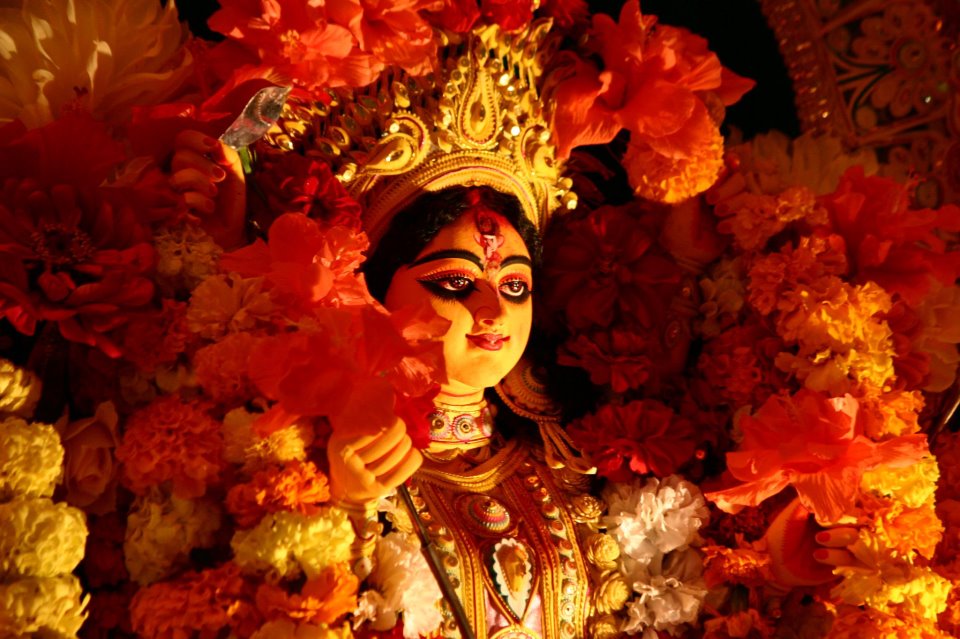



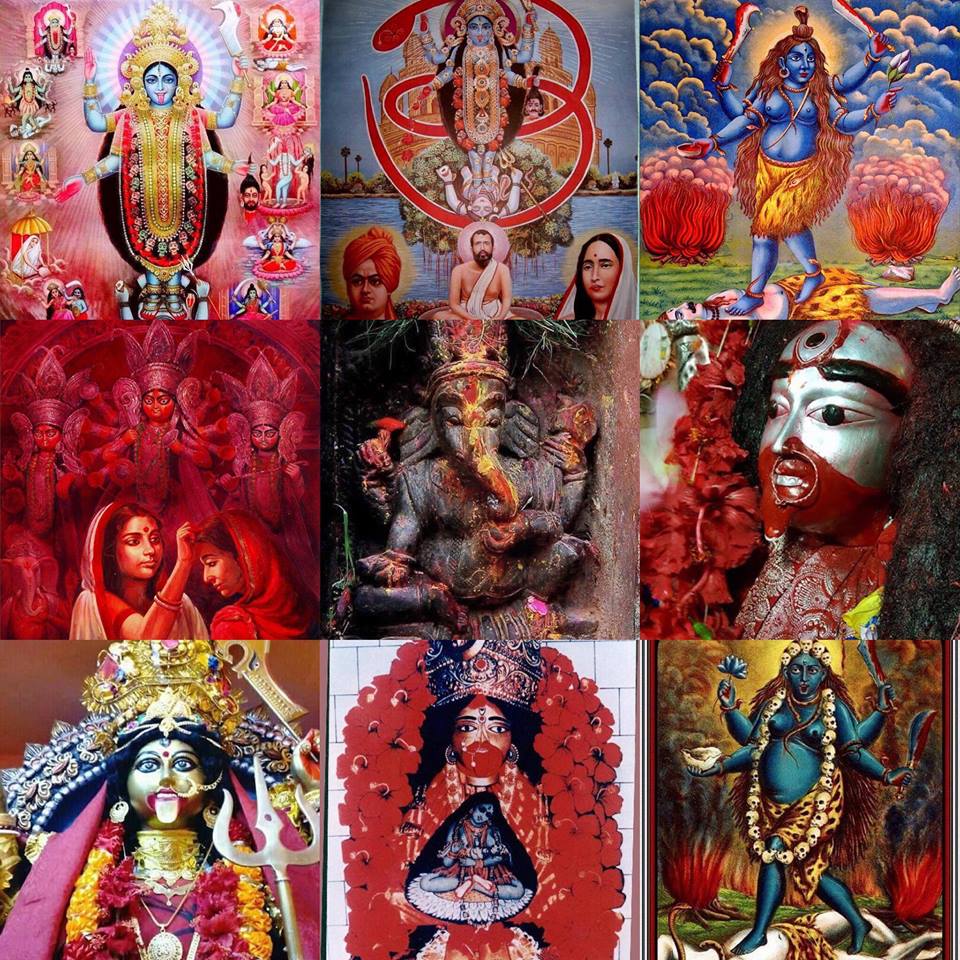
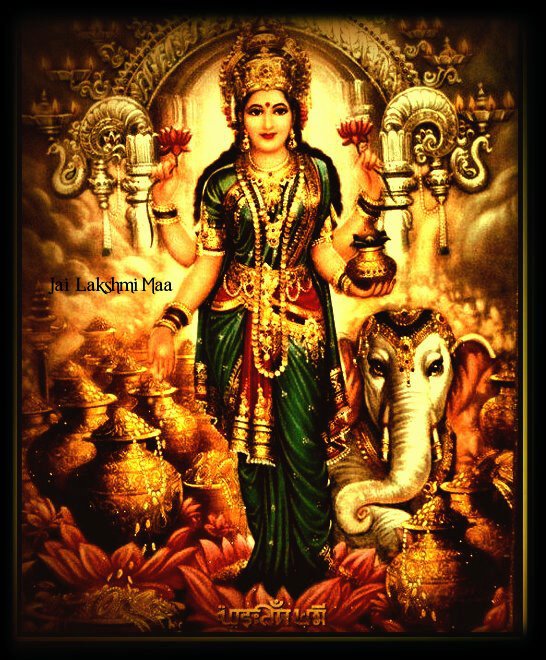

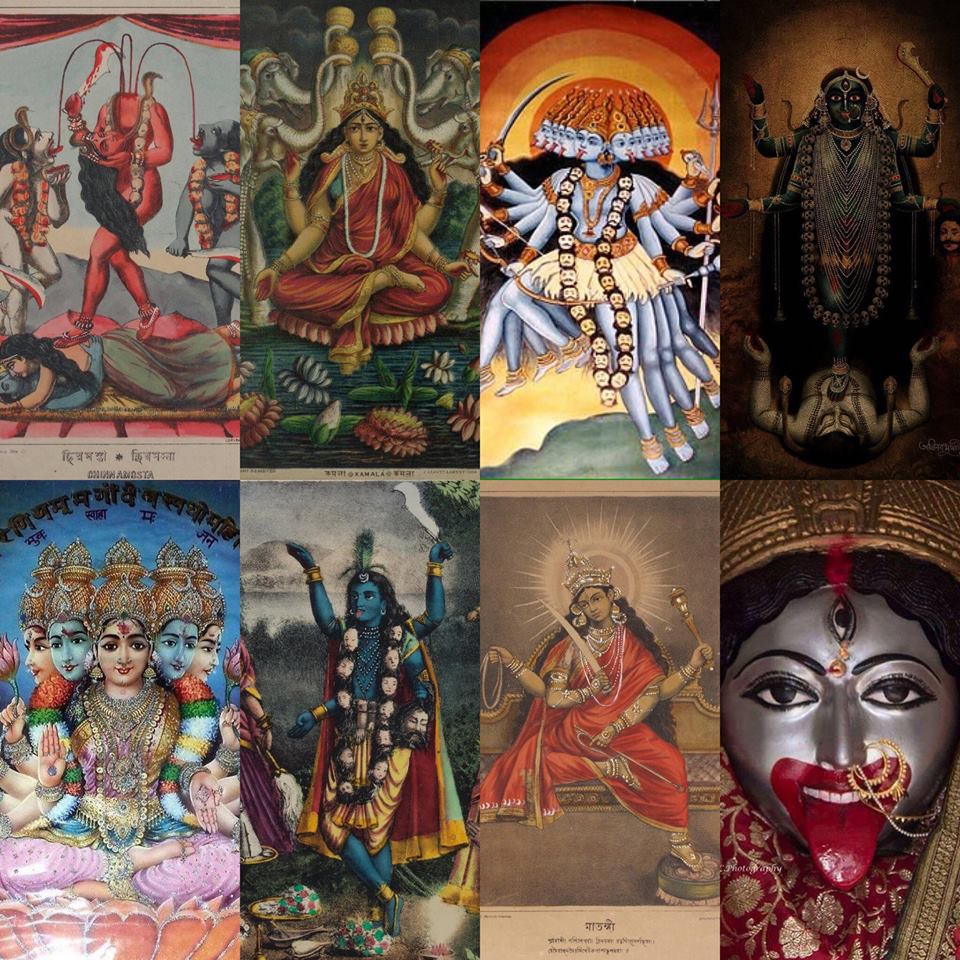
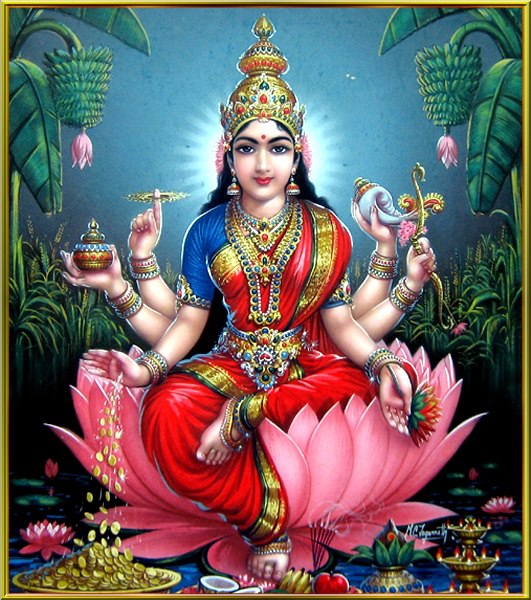



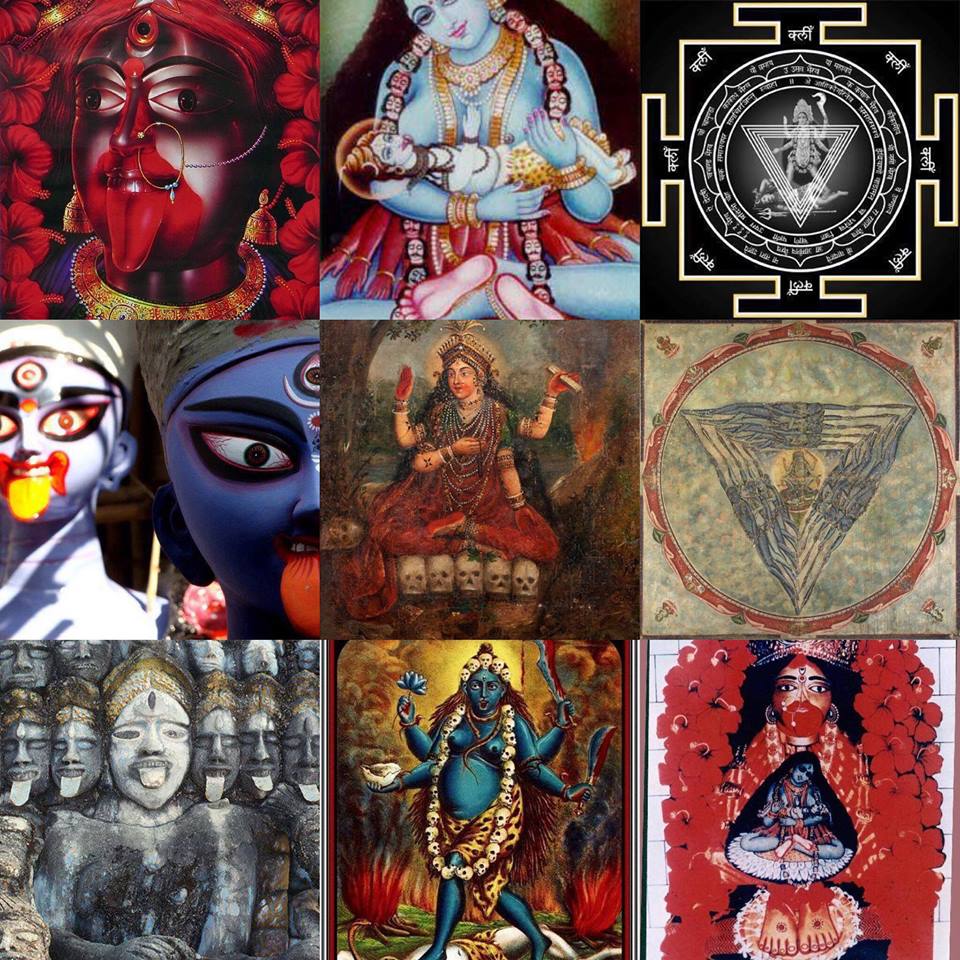


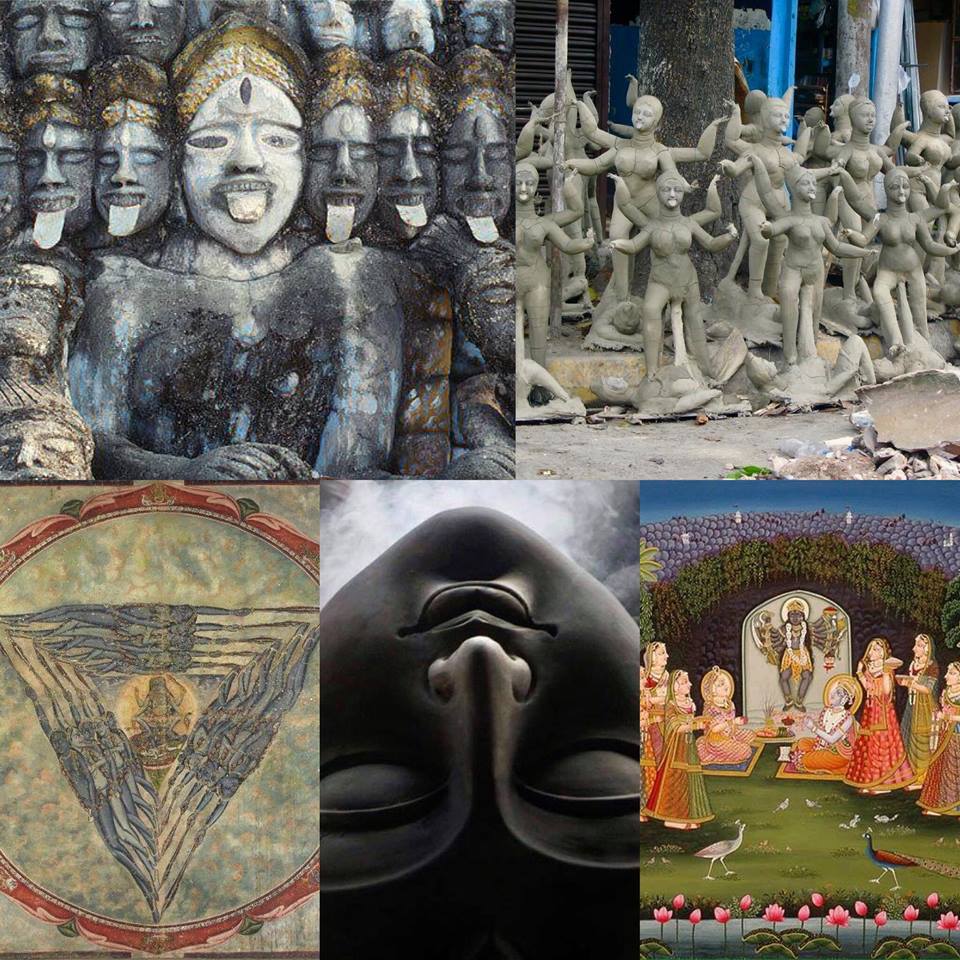







 RSS Feed
RSS Feed





















